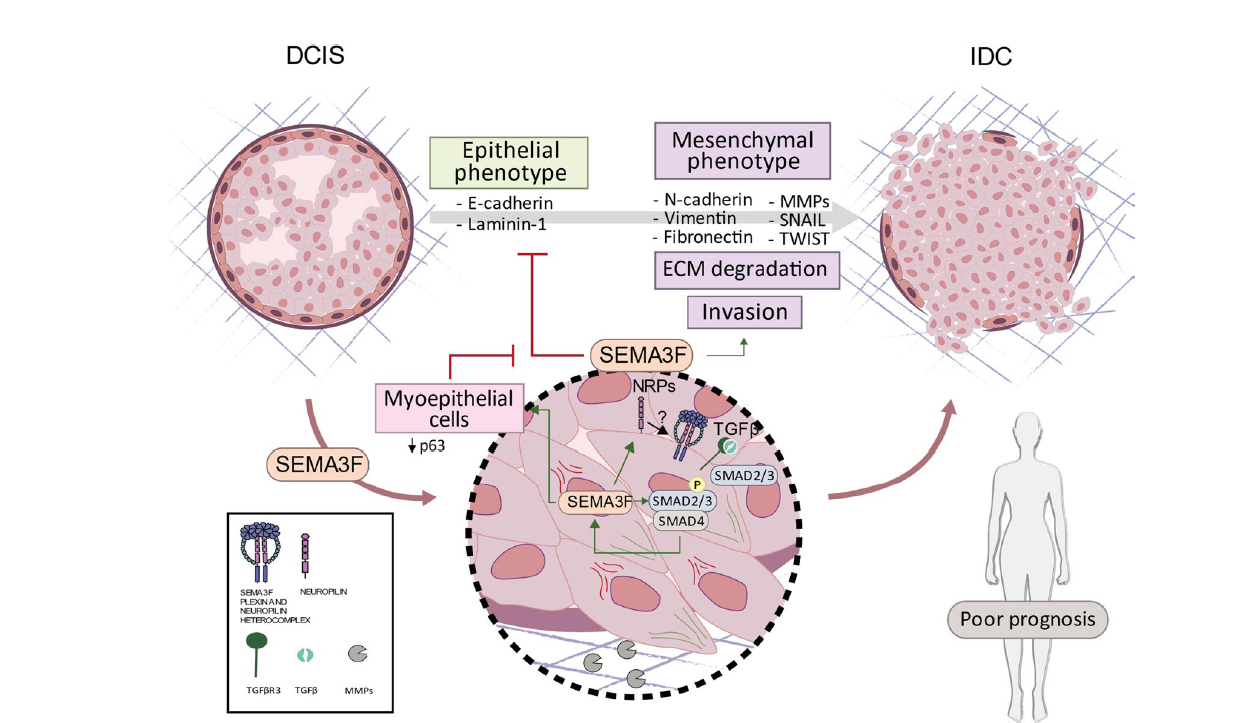
Authors: Núria Moragas, Patricia Fernandez-Nogueira, Leire Recalde-Percaz, Jamie L. Inman, Anna López-Plana, Helga Bergholtz, Aleix Noguera-Castells, Pedro J. del Burgo, Xieng Chen, Therese Sorlie, Pere Gascón, Paloma Bragado, Mina Bissell, Neus Carbó & Gemma Fuster
Abstract
Breast cancer is the most common cancer in women and the second leading cause of cancer death. DCIS is common and accounts for 20-25% of new breast cancers, with 40,000 predicted in the US in 2020. DCIS lesions vary in risk of progression. We don’t fully understand how DCIS turns into IDC in breast cancer. Interactions between cancer cells and their microenvironment influence invasion and immune surveillance. SEMA3F via NRP1/2 induces EMT and promotes DCIS to IDC transition. SEMA3F activates TGFβ, creating a pro-invasive loop and disrupting myoepithelial and basement membrane integrity. Patient data support SEMA3F and its co-receptors as markers and potential therapeutic targets for BC lesions.
Collaborations
This paper is the result of two international collaborations with researchers at the Lawrence Berkeley National Laboratory, California (USA) and Oslo University Hospital, Norway. Researchers from the Universitat de Barcelona also contributed.











Leave a Reply